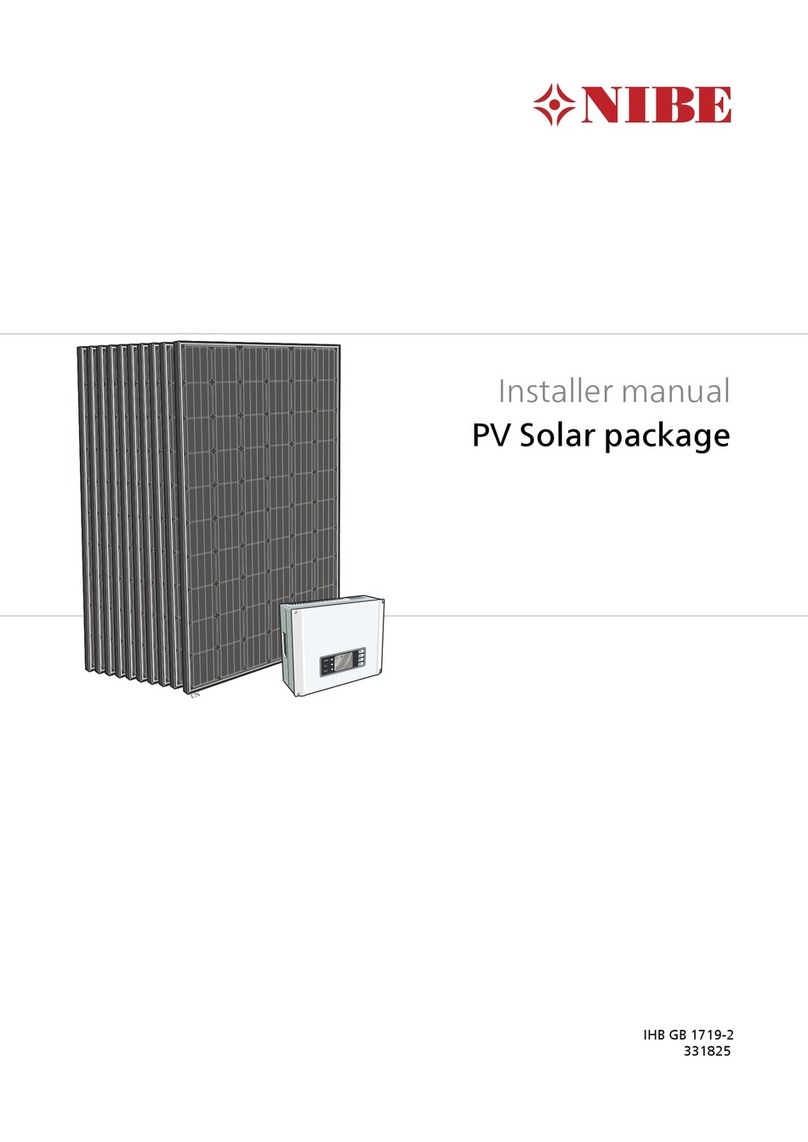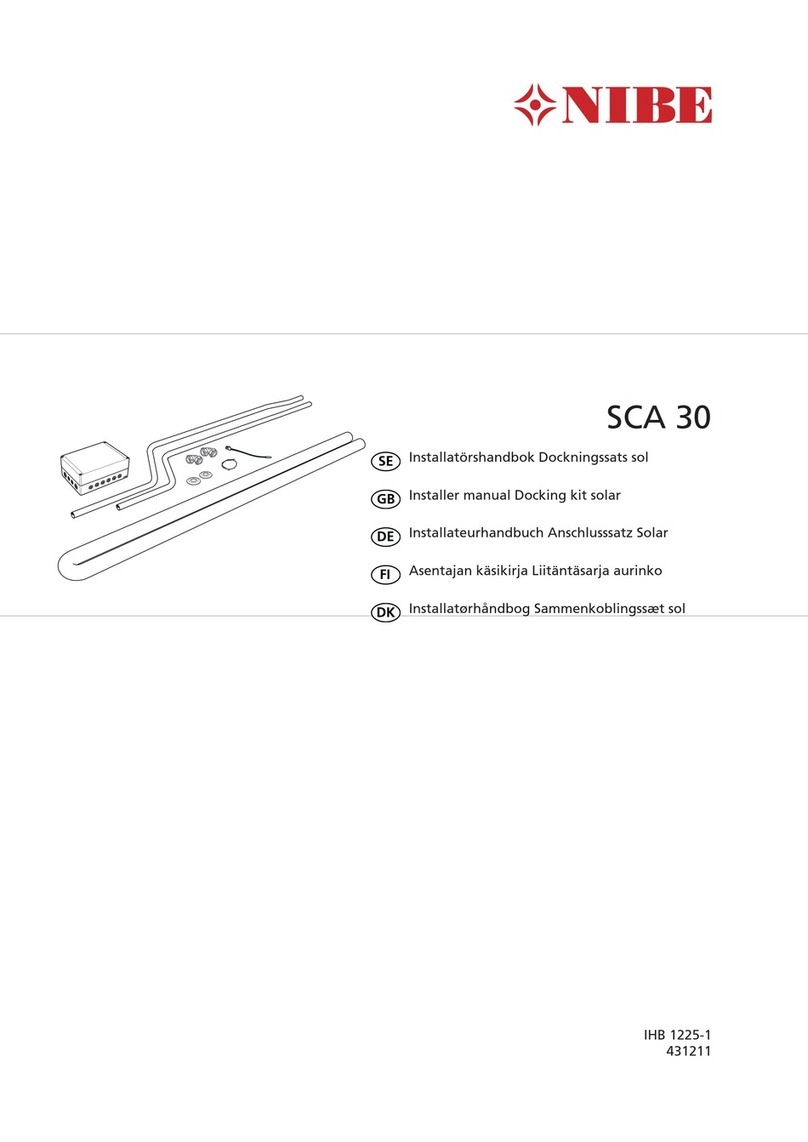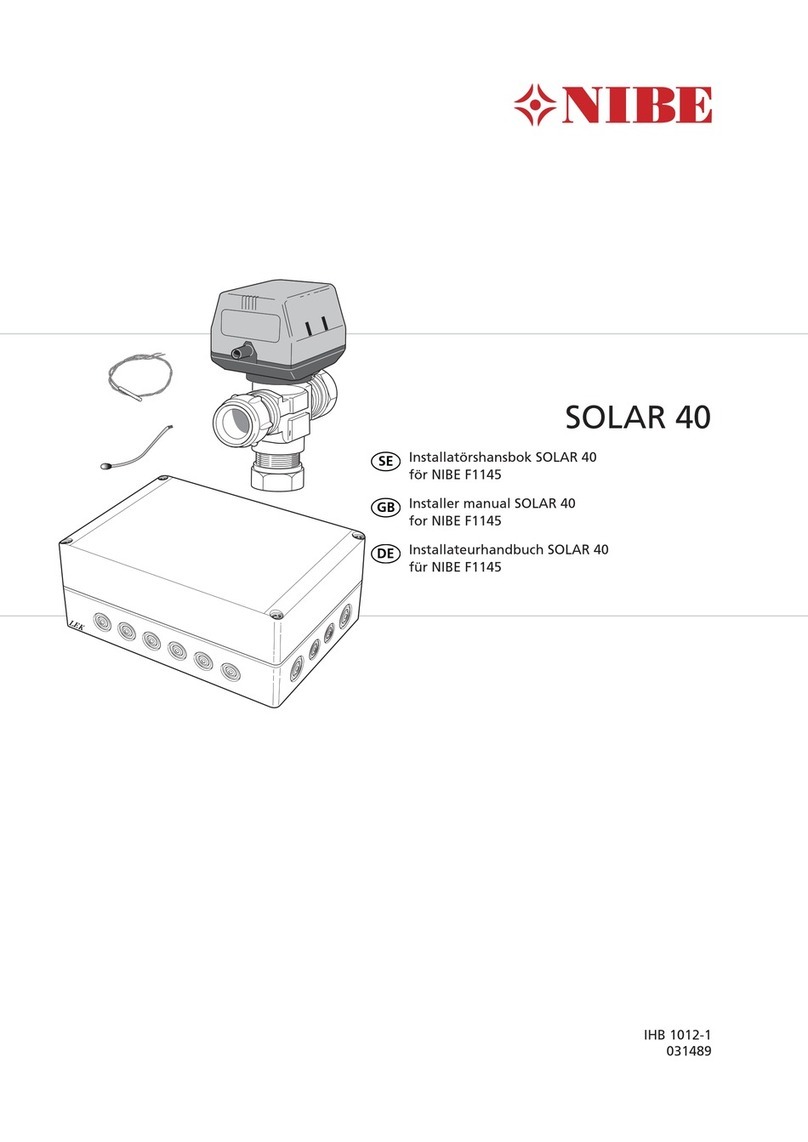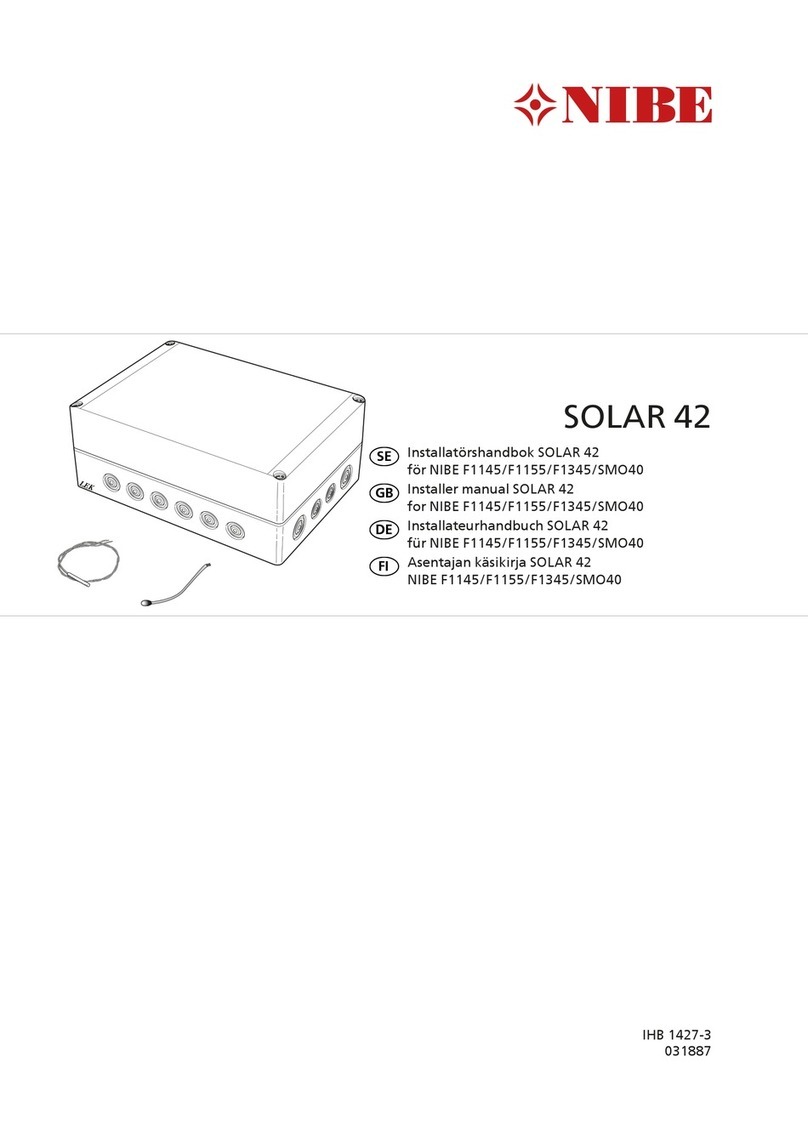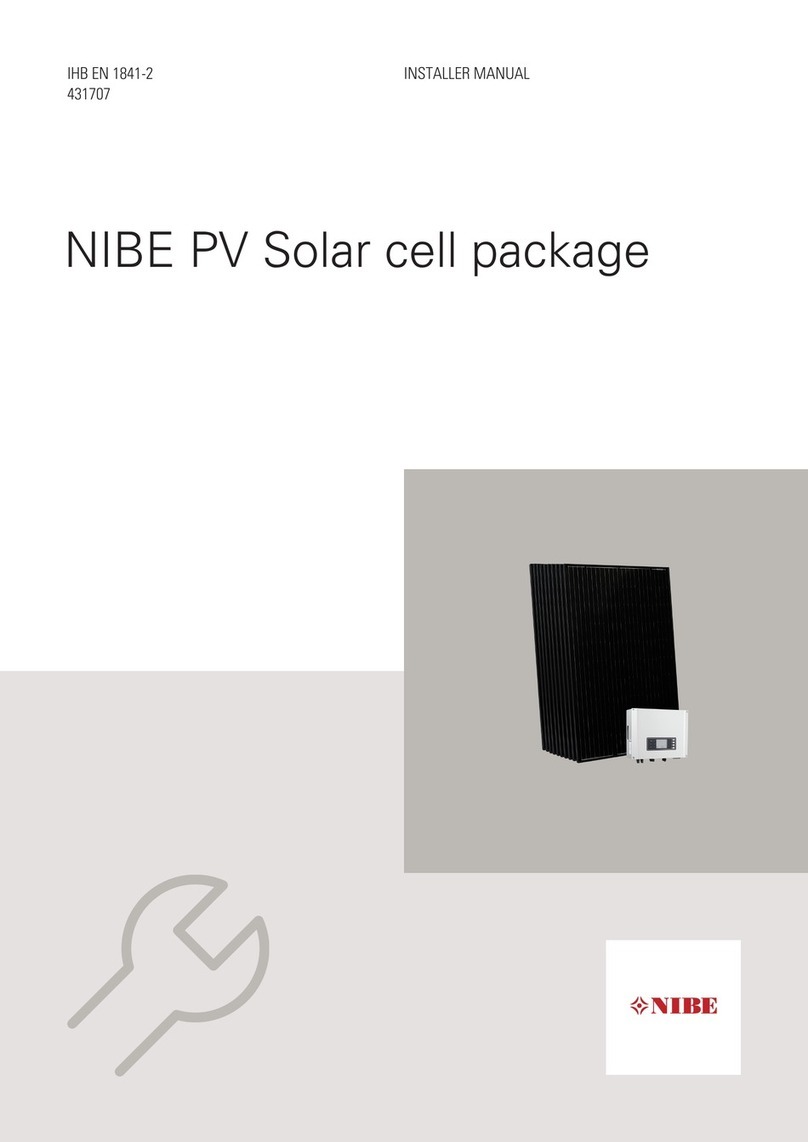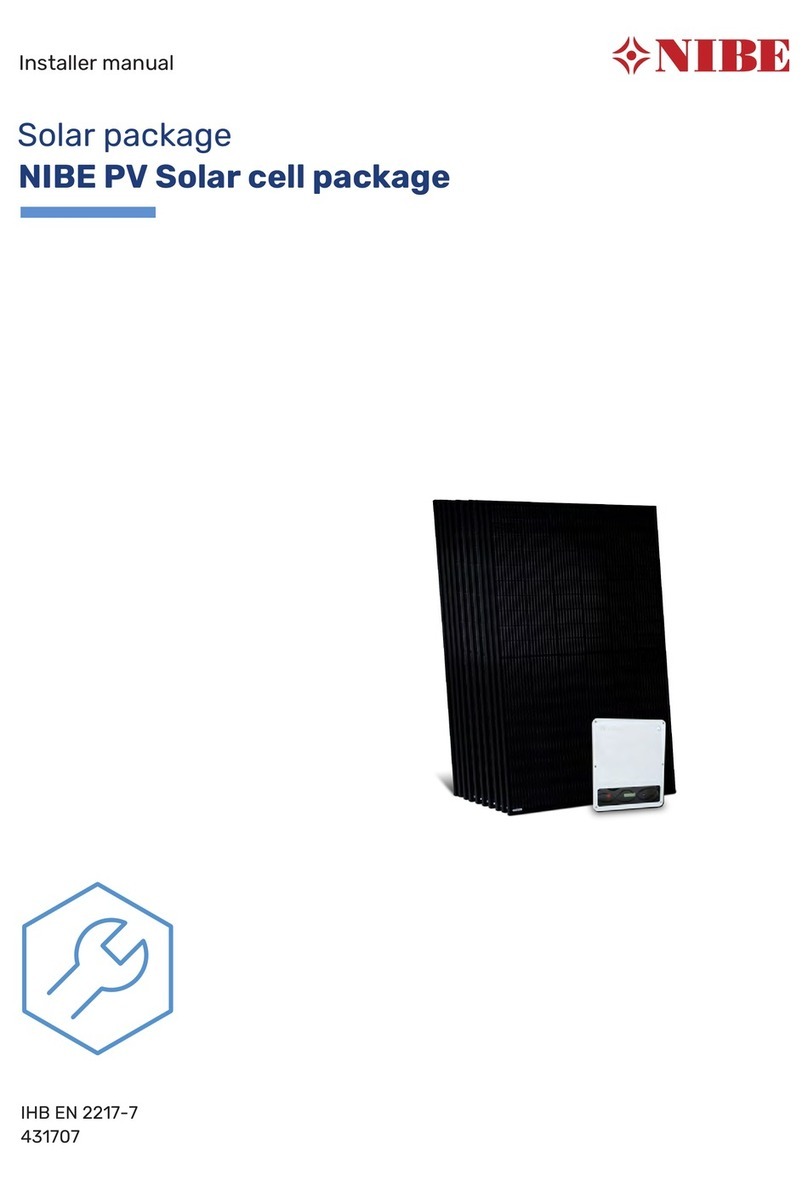General
The installation must only be carried out by competent
personnel.
The supplied material is the minimum that is required for
use with normal installations, in special cases it may need
to be supplemented. If unsure contact the supplier. Before
the installation and commissioning of the solar panel
system, information must be obtained on the applicable
norms and regulations.
NOTE
Installation of a solar panel is an extensive inter-
vention on an existing roof. The roof covering,
especially tiles, roof panels or slates - particularly
on converted and inhabited loft spaces or where
the roof's minimum angle is below size (relative
to the covering) - requires further measures
against moisture because of wind pressure and
drifting snow, this must be evaluated by the in-
staller on a case to case basis. The roof design
must be able to handle the wind and snow
loading that can occur in the region.
Static load
The installation may only be carried out on roof surfaces
or support constructions with sufficient carrying capacity
and durability. The static load capacity of the roof and
roof construction must if necessary be examined before
the solar panels are installed. Great weight should be
placed on the condition of wood roof constructions and
the possibility of screwing the mounting devices for the
solar panels into the construction. The roof construction
must be reinforced if necessary. Inspection of the whole
solar panel installation in accordance with DIN 1055 parts
4 and 5, or in accordance with country specific regulations
is particularly required in areas with snow fall and strong
winds. The characteristics of the installation's location
(prevailing wind direction, whirl winds etc.) must also be
included in the calculation/evaluation of whether these
could mean increased loads. The solar panel must be in-
stalled so that snow drifts from snow guards or because
of special conditions in the installation location cannot
occur in the vicinity of the solar panels.
The distance from the outer edges of the roof must be
at least1mtominimise the risk of wind tearing the solar
panel loose.
The installation system according to DIN 1055 part 5 for
snow zone II is intended for use up to 400 m above sea
level. We recommend that sheet metal roofs are used
instead of tiles, which can break more easily and/or the
number of brackets are increased at snow loads above
0.75 kN/m² or wind loads exceeding 0.5 kN/m². Sheet
metal roofs are always better at resisting snow and wind
loads which is why these are primarily recommended.
Stone tiles and slabs can crack more easily from the
stresses that occur. If the installation is made on a tiled
roof it is recommended that the snow is cleared if it
reaches a depth of more than 30 cm on the solar panels.
In certain cases the snow can be melted using the force
operation with the circulation pump in the solar circuit.
In roofs other than tiled a depth of 40 cm is acceptable
before the snow must be cleared. (NOTE! If the snow has
melted, packed down and then more snow has fallen
and so the density has increased, the snow may need to
be cleared despite the fact that it is not 30 cm or 40 cm
deep.)
If there is a risk that the snow will slide down onto the
panels and in particular behind the rear of raised panels,
snow guards must be installed to prevent this.
Ensure that the material under the stone roof is suffi-
ciently stable to accept the roof mounting points. Other-
wise the roof must be reinforced. The installer must
evaluate this and make a decision, if uncertain a structural
engineer should be consulted. We recommend that the
tiles are cut down so that there are no spot loads between
the roof and the brackets. The minimum distance
between stone roofs at overlap points and the underside
of the brackets is 3 mm, this is in order to allow for the
movements in the mountings system in reaction to the
loads that occur.
Lightning protection/potential compensation
Principle: Because copper or steel pipes from the solar
panel are connected to the solar pump and storage unit,
electrical current could reach the electronic components.
Damage from lightning strikes is very rare, in practice
systems rarely have lightning protection.
The requirement for lightning protection is stated in DIN
EN 62305 (VDE 0185-305) 2006-10. The requirements
for grounding are defined in DIN 18104:2007-09.
Internal lightning protection
Both direct lightning strikes and current spikes can dam-
age the electronics in the control system. Therefore the
constituent metal pipes and storage tank can be connec-
ted to a varistor. This internal lightning protection in
conjunction with an external earth gives the installation
a secure lightning protection.
External lightning protection
Technical systems on the building roof (for example solar
panels, ventilation or parabolic antennas) must be protec-
ted by external lightning protection systems. The solar
panels and the roof constructions must be integrated so
that the solar panel field is protected from a direct light-
ning strike. The combined solar panel area must be loc-
ated within the protective area provided by the lightning
protection. A safety distance of 0.5 m in all directions
7Chapter 3 | InstallationSOLAR FP215 P/PL
3 Installation







